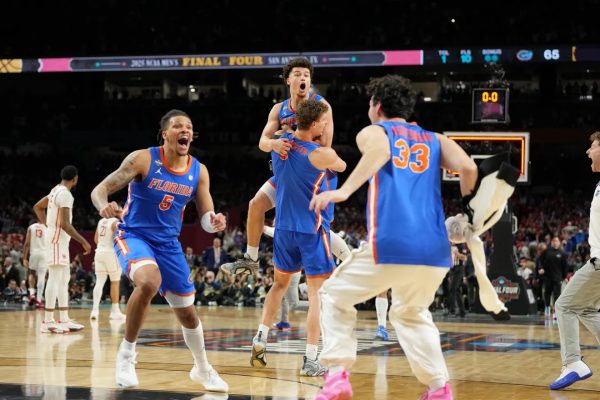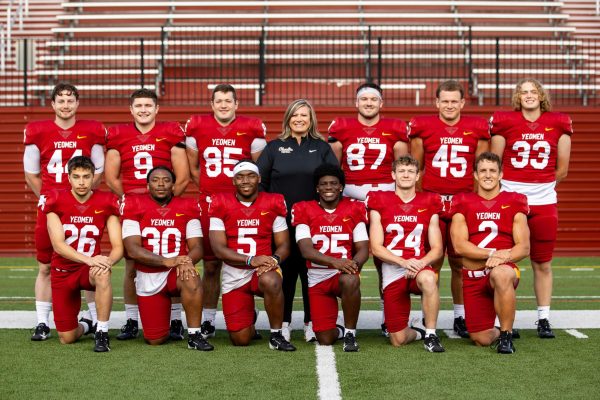Athletes Discuss Recovery Process From Injuries
College athletes often go through battles that stretch beyond their actual games, matches, and meets. One of the toughest of these is dealing with injuries. We are all aware that people can get seriously hurt while participating in sports, but few have an idea of what the physical and emotional recovery entails. For athletes, the rehab process is not pretty, and coming back from an injury does not always signify a return to full health.
Fourth-year swimmer Elly Ragone has faced it all while dealing with injuries throughout her time at Oberlin. In addition to challenges presented by being asthmatic, she has weathered a broken heel, arthritis, rib dislocation, strains, and general dis- comfort, all of which have taken a significant mental toll on her.
“If one injury is doing well, another one will come out and make it so that I am in a lot of pain,” Ragone said. “It feels never-ending and makes it hard to keep going.”
Ragone not only been frustrated by the negative effects her injuries have had on her mental health, but also with the stigma that comes with being injured, sometimes expressed by her own teammates.
“Swimming has been really awful for my mental health, and I think most of that is from having injuries,” she said. “One of the things that has helped me the most is just not caring what others think. There are definitely some people who are on my team who are very judgemental and rude about injuries, but I just have learned to ignore them and surround myself with those who are supportive.”
Despite her series of injuries, Ragone has found a way to compete at a high level and swim through the pain. This season, she has been honored as the North Coast Athletic Conference Athlete of the Week twice and was one of the leading scorers for the team leading up to the NCAC Championship meet.
“I was recruited as a distance swimmer, but I can’t train enough to actually be in shape enough to swim distance events,” Ragone said. “Luckily, I am able to do sprint events, mostly just the 50- and 100[-yard], sometimes the 200. Because I do such short events, adrenaline keeps me from feeling a lot of pain during them, which is very helpful.”
Ragone credits Director of Sports Medicine Jill Rondini and other medical professionals for helping her deal with injuries.
“Jill is absolutely amazing,” she said. “She has kept me sane and as healthy as I can be through- out the last four years. Also, my chiropractor and other doctors are very helpful.”
Fourth-year baseball player Jackson Schaum has also had a long battle with injuries during much of his college career. He tore his labrum in early 2021 and had surgery on it in May of that year. For him, resilience has been integral to the long process of rehabilitation, especially with the anxiety of potential reinjury.
“The mental part, at least in my experience, is over half the battle,” Schaum said. “I had a re-injury scare two weeks ago. When it happens, your first instinct is the worst case scenario.”
Luckily, the scare did not turn into something more serious for Schaum. Still, it serves as a reminder of how cautious and patient athletes have to be while coming back from an injury.
“You have to be careful even with totally normal soreness,” Schaum said. “The hardest part for me is being able to trust it enough to go full effort without hesitancy.”
Schaum thanks his teammates for giving him support as he dealt with this injury for two years.
“Honestly, I don’t think I would’ve continued playing if I didn’t have teammates that supported me so much,” he said. “They helped me a ton during my rehab with my return to throwing. They also were a motivation to get back to full strength. I love baseball, but I wanted to come back more to be with my teammates.”
Ragone and Schaum are fourth-years and have been able to reflect on how their injuries have impacted their collegiate careers in the long term. For younger athletes like first-year lacrosse player Jackson Davies, the stress brought by injury is experienced differently. Davies has been dealing with rotator cuff strains in both of his shoulders ahead of his first season of college lacrosse and for him, sitting on the sidelines has been agonizing.
“The most difficult part is definitely not being able to play,” Davies said. “As [first-years] we are trying to prove ourselves and make an impact on the team and we can’t do that if we are injured.”
Like Ragone, Davies is grateful to Rondini for helping him deal with his injury.
“Jill has been amazing in helping me,” he said. “She’s a great trainer, great human, and she al- ways has a smile and makes me feel better when I’m down.”
Despite the frustration he feels over not being able to play, Davies approaches his injury with a patient mindset and is deter- mined to recover and work hard at practice.
“Honestly, there’s not much to do besides know that injuries are a part of sports and they will inevitably happen,” he said. “The best thing we can do is work as hard as we do on the field to make our injuries feel better and get as close to 100 percent as possible.”





